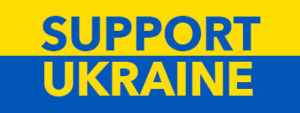Latest Blog Posts
- First Star I See Tonight: A Knyzhka Corner Book Review
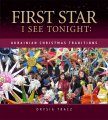 In this edition of Knyzka Corner, we will be discussing Orysia Tracz’s book, First Star I See Tonight: Ukrainian Christmas Traditions. Orysia Tracz explores the origins, rituals, and cultural significance of Ukrainian Christmas traditions in her first book, First Star I See Tonight. This book includes a number of articles about Ukrainian Christmas celebrations in Winnipeg and Manitoba since the first immigration to Canada 125 years ago. It is the first in-depth English language book on Ukrainian Christmas traditions, and will definitely be of interest to Ukrainian families throughout the… Read more: First Star I See Tonight: A Knyzhka Corner Book Review
In this edition of Knyzka Corner, we will be discussing Orysia Tracz’s book, First Star I See Tonight: Ukrainian Christmas Traditions. Orysia Tracz explores the origins, rituals, and cultural significance of Ukrainian Christmas traditions in her first book, First Star I See Tonight. This book includes a number of articles about Ukrainian Christmas celebrations in Winnipeg and Manitoba since the first immigration to Canada 125 years ago. It is the first in-depth English language book on Ukrainian Christmas traditions, and will definitely be of interest to Ukrainian families throughout the… Read more: First Star I See Tonight: A Knyzhka Corner Book Review - Listening Back: An Interview with Mirko Petriw — Ukraine on the Brink of War
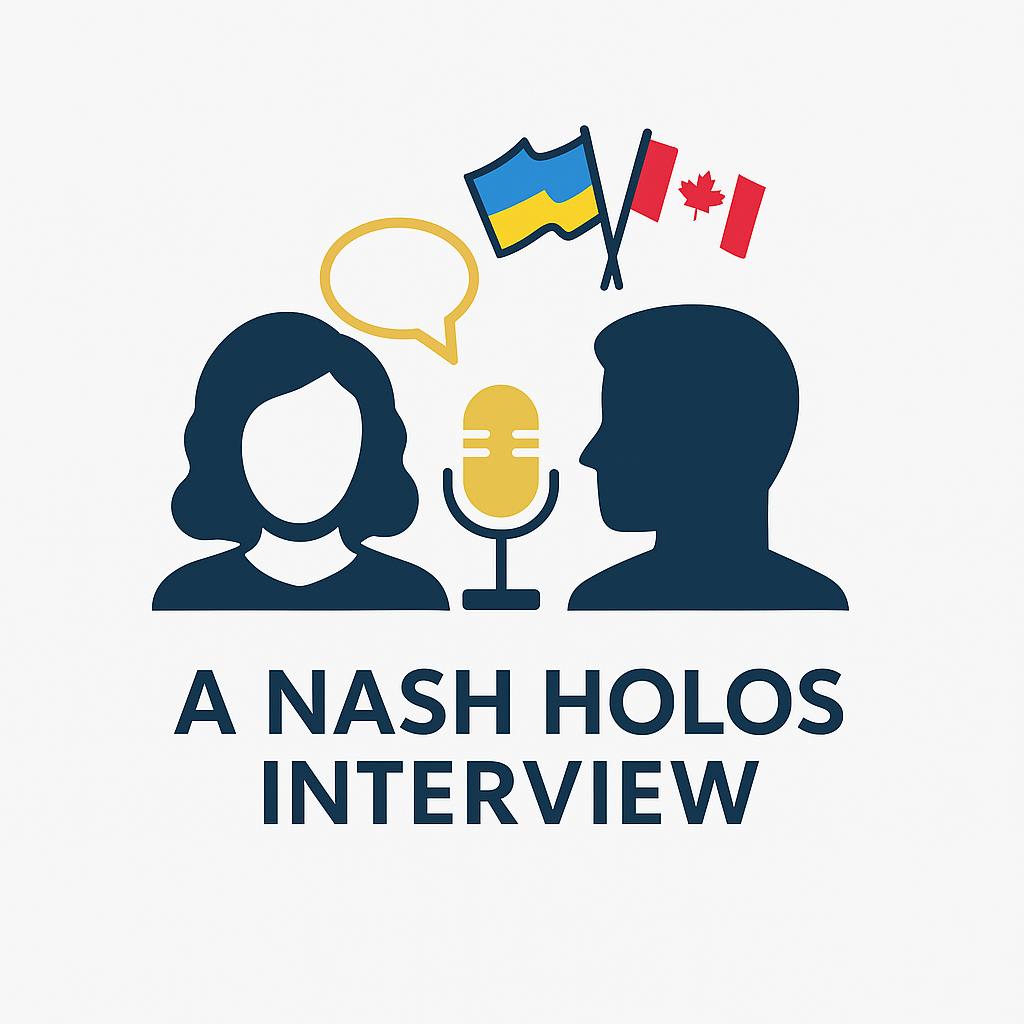 This interview was recorded at the height of the Maidan uprising, in January of 2014. Just weeks later, Crimea would be annexed — a possibility unimaginable at the time of this conversation. It was a volatile time, marked by rapid and unprecedented changes that would permanently reshape Ukraine’s path forward. Listening now, it offers insights into how people perceived the stakes before history took its unexpected and shocking turn. Drawn from expert knowledge and sharp analysis of historical patterns set against the unfolding events of the time, these perspectives remain… Read more: Listening Back: An Interview with Mirko Petriw — Ukraine on the Brink of War
This interview was recorded at the height of the Maidan uprising, in January of 2014. Just weeks later, Crimea would be annexed — a possibility unimaginable at the time of this conversation. It was a volatile time, marked by rapid and unprecedented changes that would permanently reshape Ukraine’s path forward. Listening now, it offers insights into how people perceived the stakes before history took its unexpected and shocking turn. Drawn from expert knowledge and sharp analysis of historical patterns set against the unfolding events of the time, these perspectives remain… Read more: Listening Back: An Interview with Mirko Petriw — Ukraine on the Brink of War - Two authors chat about their books set in modern-day war-torn Ukraine
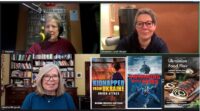 In late February 2025, shortly after the three-year mark of russia’s full scale invasion of Ukraine, I had the great privilege to speak on air with the authors of two remarkable books that bring home this devastating war in gripping novels that are hard to put down. Chrystyna Lucyk-Berger is an American author now living in Austria who has written Swimming With Spies, a middle-grade novel set in Crimea, based on the true story of the sad fate of therapy dolphins in a dolphinarium in the port city of Sevastopol at… Read more: Two authors chat about their books set in modern-day war-torn Ukraine
In late February 2025, shortly after the three-year mark of russia’s full scale invasion of Ukraine, I had the great privilege to speak on air with the authors of two remarkable books that bring home this devastating war in gripping novels that are hard to put down. Chrystyna Lucyk-Berger is an American author now living in Austria who has written Swimming With Spies, a middle-grade novel set in Crimea, based on the true story of the sad fate of therapy dolphins in a dolphinarium in the port city of Sevastopol at… Read more: Two authors chat about their books set in modern-day war-torn Ukraine - “Canadian Kobzar” in conversation with Pawlina discussing Toonie Tuesday, Wild Hornets and more
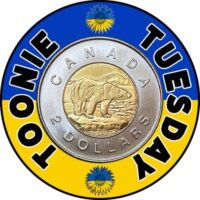 In this interview which first aired on Nash Holos in March 2025, Canadian Kobzar tells us about NAFO, the Wild Hornets, and the Toonie Tuesday fundraiser. To listen, click on the player. Transcript below. Enjoy! Pawlina: Russia’s full-scale war of aggression against Ukraine is into its fourth year. Unfortunately, it has morphed into a political football for the media, which pays scant attention to the realities that the Ukrainian people face and have to deal with daily. It’s normal, if sad and bit callous, for compassion fatigue to sit in… Read more: “Canadian Kobzar” in conversation with Pawlina discussing Toonie Tuesday, Wild Hornets and more
In this interview which first aired on Nash Holos in March 2025, Canadian Kobzar tells us about NAFO, the Wild Hornets, and the Toonie Tuesday fundraiser. To listen, click on the player. Transcript below. Enjoy! Pawlina: Russia’s full-scale war of aggression against Ukraine is into its fourth year. Unfortunately, it has morphed into a political football for the media, which pays scant attention to the realities that the Ukrainian people face and have to deal with daily. It’s normal, if sad and bit callous, for compassion fatigue to sit in… Read more: “Canadian Kobzar” in conversation with Pawlina discussing Toonie Tuesday, Wild Hornets and more - Show Archives and Podcast Feed changesUpdate: October 8, 2025 Late last year, I was hit with a takedown notice by my podcast hosting platform where I had been archiving the shows for many years. Fortunately, I appealed and was given a reprieve. The feed was not taken down, but I was informed that going forward I am not allowed to post full shows featuring music. The immediate result was, however, a halt to updating my RSS feed with new episodes, and the need to find a new home for them. The end result is that… Read more: Show Archives and Podcast Feed changes
- Knyzhka Corner book review: The Torture Camp on Paradise Street
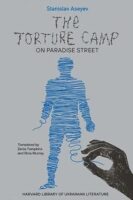 In this edition of Knyzka Corner, we will be discussing Stanislav Aseyev’s, The Torture Camp on Paradise Street. The Torture Camp on Paradise Street, translated by Zenia Tompkins and Nina Murray and published by the Ukrainian Research Institute at Harvard University, is a personal memoir of Stanislav Aseyev’s two and a half years in illegal captivity, most of it at the site of the defunct insulation factory, Isoliatsia (Isolation), in the city of Donetsk. This secret prison in the heart of Donetsk was called the “Donetsk Dachau” because of the… Read more: Knyzhka Corner book review: The Torture Camp on Paradise Street
In this edition of Knyzka Corner, we will be discussing Stanislav Aseyev’s, The Torture Camp on Paradise Street. The Torture Camp on Paradise Street, translated by Zenia Tompkins and Nina Murray and published by the Ukrainian Research Institute at Harvard University, is a personal memoir of Stanislav Aseyev’s two and a half years in illegal captivity, most of it at the site of the defunct insulation factory, Isoliatsia (Isolation), in the city of Donetsk. This secret prison in the heart of Donetsk was called the “Donetsk Dachau” because of the… Read more: Knyzhka Corner book review: The Torture Camp on Paradise Street - Ukrainian Food Flair – the Cookbook
 For those advance planners, here’s a suggestion for holiday gift-giving. Everyone loves a good cookbook, and this one has turned out to be quite popular. In August of last year, I wrapped up a project started almost 20 years ago—a collection of the recipes of Sylvia Molnar, who presented over 200 of them in the series Ukrainian Food Flair. Sylvia passed away in 2015, but last year her sister Leone and I finally were able to publish her recipes, as a tribute to her memory. Ukrainian Food Flair: Authentic Recipes… Read more: Ukrainian Food Flair – the Cookbook
For those advance planners, here’s a suggestion for holiday gift-giving. Everyone loves a good cookbook, and this one has turned out to be quite popular. In August of last year, I wrapped up a project started almost 20 years ago—a collection of the recipes of Sylvia Molnar, who presented over 200 of them in the series Ukrainian Food Flair. Sylvia passed away in 2015, but last year her sister Leone and I finally were able to publish her recipes, as a tribute to her memory. Ukrainian Food Flair: Authentic Recipes… Read more: Ukrainian Food Flair – the Cookbook - Knyzhka Corner book review: Kidnapped from Ukraine: Under Attack by Marsha Skrypuch
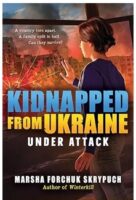 In this edition of Knyzka Corner, we will be discussing Marsha Forchuk Skrypuch’s novel, Kidnapped from Ukraine: Under Attack. In this novel, Skrypuch describes the horrific human impact of Vladimir Putin’s full-scale invasion of Ukraine, which began on February 24, 2022. His first invasion occurred in 2014 when he took Crimea and portions of Eastern Ukraine. She explores how this invasion changed the lives of 12-year-old twin sisters Rada and Dariia Popkova from Mariupol. Skrypuch explains her own reaction to these events in the Author’s Note, “I never thought I… Read more: Knyzhka Corner book review: Kidnapped from Ukraine: Under Attack by Marsha Skrypuch
In this edition of Knyzka Corner, we will be discussing Marsha Forchuk Skrypuch’s novel, Kidnapped from Ukraine: Under Attack. In this novel, Skrypuch describes the horrific human impact of Vladimir Putin’s full-scale invasion of Ukraine, which began on February 24, 2022. His first invasion occurred in 2014 when he took Crimea and portions of Eastern Ukraine. She explores how this invasion changed the lives of 12-year-old twin sisters Rada and Dariia Popkova from Mariupol. Skrypuch explains her own reaction to these events in the Author’s Note, “I never thought I… Read more: Knyzhka Corner book review: Kidnapped from Ukraine: Under Attack by Marsha Skrypuch - Swimming with Spies: A Knyzhka Corner Book Review
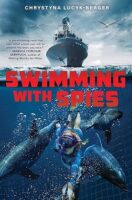 Swimming with Spies is a young adult novel by Chrystyna Lucyk-Berger, set in Crimea during Russia’s 2014 annexation. Part of The Reschen Valley Series, the story follows a dolphin trainer navigating themes of loyalty, empathy, and marine biology in a time of political upheaval. This review originally aired on the Knyzhka Corner segment of Nash Holos Ukrainian Roots Radio. Transcript: In this edition of Knyzhka Corner, we will be discussing Swimming With Spies, a novel for young readers by Chrystyna Lucyk-Berger. Swimming With Spies is set in 2014 Sevastopol, Crimea… Read more: Swimming with Spies: A Knyzhka Corner Book Review
Swimming with Spies is a young adult novel by Chrystyna Lucyk-Berger, set in Crimea during Russia’s 2014 annexation. Part of The Reschen Valley Series, the story follows a dolphin trainer navigating themes of loyalty, empathy, and marine biology in a time of political upheaval. This review originally aired on the Knyzhka Corner segment of Nash Holos Ukrainian Roots Radio. Transcript: In this edition of Knyzhka Corner, we will be discussing Swimming With Spies, a novel for young readers by Chrystyna Lucyk-Berger. Swimming With Spies is set in 2014 Sevastopol, Crimea… Read more: Swimming with Spies: A Knyzhka Corner Book Review - 29 Years of the Hryvnia: Currency, Identity, and the Stories We Must Not Forget
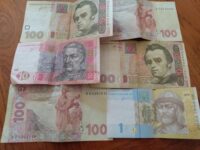 Ukraine celebrates the 29th anniversary of the hryvnia, its national currency. To mark 29 years of Ukraine’s hryvnia, introduced to the world on September 2, 1996, we revisit a four-part radio series originally aired five years ago on Nash Holos Ukrainian Roots Radio. This series explores how coins and banknotes quietly tell stories—of independence, identity, and a long, intertwined history shaped by centuries of shared struggles for independence and sovereignty by both nations. They aren’t just pieces of paper and metal—they’re miniature monuments to historical memory. 🪙 Part 1: Sovereignty… Read more: 29 Years of the Hryvnia: Currency, Identity, and the Stories We Must Not Forget
Ukraine celebrates the 29th anniversary of the hryvnia, its national currency. To mark 29 years of Ukraine’s hryvnia, introduced to the world on September 2, 1996, we revisit a four-part radio series originally aired five years ago on Nash Holos Ukrainian Roots Radio. This series explores how coins and banknotes quietly tell stories—of independence, identity, and a long, intertwined history shaped by centuries of shared struggles for independence and sovereignty by both nations. They aren’t just pieces of paper and metal—they’re miniature monuments to historical memory. 🪙 Part 1: Sovereignty… Read more: 29 Years of the Hryvnia: Currency, Identity, and the Stories We Must Not Forget


